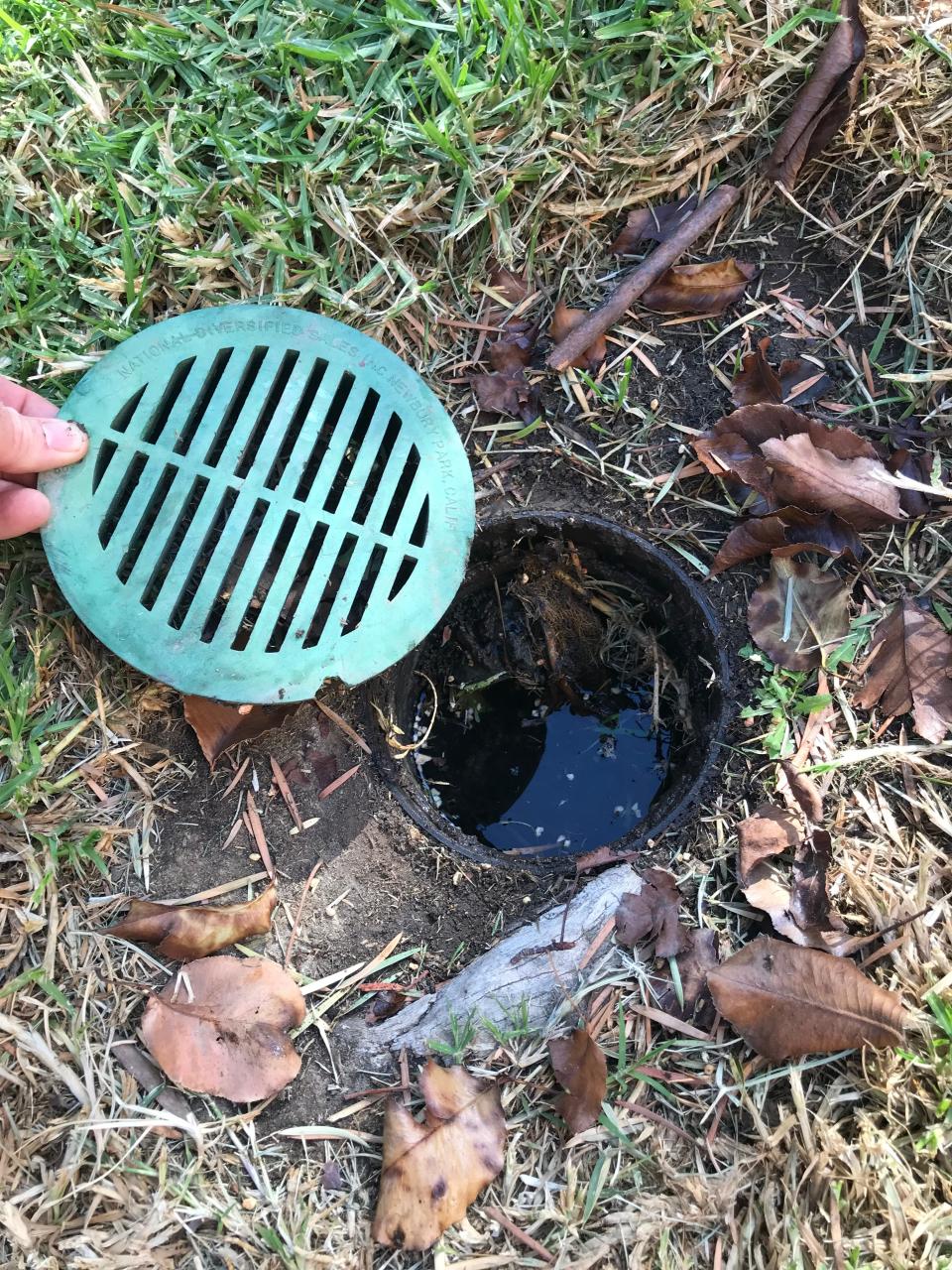Invasive day-biting mosquitoes come to life across Ventura County
The day-biters stormed to life in September when record-breaking, triple-digit heat was followed by rain courtesy of Tropical Storm Kay.
Mosquitoes bred in rain barrels, plant saucers and even water-filled bottle caps proliferated in Simi Valley, Ojai and other havens of heat or humidity.
Some of the insects are native to the area and include a Culex variety that can carry West Nile virus. Others are invasive newcomers called Aedes aegypti and bite aggressively during the day, often on the ankles.
Though the risk of infecting people is small, the Aedes mosquitoes can carry diseases like Zika, dengue, chikungunya and yellow fever.
After the heat and rain, the day-biters proliferated in downtown Moorpark, descending on mosquito control workers trying make a dent in their numbers. When the mosquitoes couldn't find bare ankles, they hovered in the air looking for other blood.
"It was like gangbusters," said Mark Westerline, vector animal specialist for the city of Moorpark. "It's like slow-moving zombies with wings."
At the same time they do battle against the Aedes aegypti, mosquito control specialists monitor and try to reduce the risks of West Nile virus, which can be spread from infected birds to Culex mosquitoes to people. The virus causes no illness in many people but can, in rare cases, trigger encephalitis or meningitis.
West Nile has been detected in one dead bird in Simi Valley so far in a season that has been relatively quiet, said Cary Svoboda, program lead for Ventura County's mosquito control efforts. There have been no human cases reported in the county since 2019, he said, but the bird offers proof the virus is here.
More: Long-awaited Veterans Affairs clinic opens in Ventura; new services being phased-in
Vector control workers trap the mosquito to try to assess its prevalence. They also use chickens as sentinels in an early warning system. Red Leghorn hens are placed in Fillmore and Simi Valley sites where mosquitoes are abundant. Workers extract blood from the birds and send it to labs for West Nile testing. Even if infected, the hens survive.
Hot weather can extend the West Nile season into November but the activity often recedes as days grow shorter, Svoboda said.
Peak season for the day-biting Aedes aegypti mosquitoes lasts longer but tends to slow down locally as the weather gets cooler. Also known as yellow fever mosquitoes, the mosquitoes were first found in the county two years ago.
In some areas, complaints receded after the mosquitoes first emerged. In Moorpark, the Aedes numbers have declined after surging in September. Workers worry the roller coaster will turn upward again when more rain comes.
The yellow fever mosquitoes are small and black with white stripes on their backs and legs. They stir up anxiety because they can become disease carriers by biting returning travelers infected in other parts of the world. There have been no documented cases of mosquitoes in California infecting people with Zika or the other viruses.
Vector control specialists said the potential health concerns are accompanied by the disruption the mosquitoes can cause.
"It's really hard to enjoy your backyard," Svoboda said. He called on people to clear standing water in their yards and to take other steps to control the mosquitoes. "There's no easy magic bullet. It will take an effort from everybody."
More: Ventura County Christian School one step closer to eviction in fray with Ventura district
The mosquitoes appear most prevalent in Simi Valley and the Conejo Valley, Svoboda said. Activity has also escalated in Ojai.
The Aedes have been found in Ventura and Oxnard but the rare incidence suggests the mosquitoes are not established, Svoboda said. The insects have not yet been documented in Camarillo and Santa Paula but may have spread there.
Another invasive mosquito that can carry viruses known as the Asian tiger mosquito, or Aedes albopictus, has been found in Los Angeles County but not yet in Ventura County.
"It doesn’t seem to spread city to city as quickly," Svoboda said. "It’s certainly possible we’ll find albopictus in the near future. I don’t know if it’s a given."
Vector control specialists use larvicides, traps and tiny mosquito fish to try to control the population. They monitor the arroyos where the mosquitoes proliferate as well as other breeding sites like untended pools, gutters and roadside ditches.
But they also urge people to inspect their properties for standing water in planters, saucers, water dishes for pets, toys and even the base structure for outdoor basketball hoops. Aedes aegypti can breed in as little as a teaspoon of water.

Pool covers should be emptied of water. Holes in window screens should be mended. Leaky faucets, wading pools and over-watered gardens can be breeding grounds.
"We’re creating our own microclimates in our own lawns," said Anais Medina Diaz, public information officer for the Greater Los Angeles Vector Control District. "It definitely helps to increase the population."
People who spot potential breeding sources for mosquitoes or have been hit hard by the insects can call the county's hotline at 805-658-4310. Svoboda said they can also take other action.
"Pray for cold," he said with a laugh.
Tom Kisken covers health care and other news for the Ventura County Star. Reach him at tom.kisken@vcstar.com or 805-437-0255.
SUPPORT LOCAL JOURNALISM: To see more stories like this, subscribe here.
This article originally appeared on Ventura County Star: Invasive day-biting mosquitoes come to life in Ventura County

